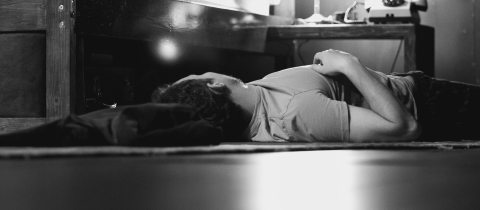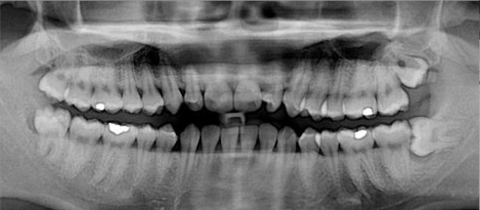In 2017, I visited the oldest diamond polishing factory in the world when I was in the Netherlands for a conference. I was given a guided tour during which I learned about the many ways in which a diamond can be cut. I did not anticipate that the tour would end with the expectation of a sale. In the tour guide’s office, I was allowed to inspect individual diamonds available for purchase, and much like the conditions that turn carbon into a diamond, I could feel the pressure mounting.
What I did not learn that day was that, when I died, my ashes could be made into a diamond. I think I would have remembered that remarkable claim.
The idea of connecting jewelry with mourning is not new. Pocket watches in the 1600s were sometimes used as memento mori, meaning reminders of our mortality, through the use of skulls and Latin inscriptions such as “the hour of death is uncertain.” Over the centuries, these reminders moved away from being abstract notions of impermanence and became objects that served to remember a deceased loved one. Queen Victoria was a key influencer in this shift: she had three brooches to mark the passing of her third child, Princess Alice, and an agate and diamond pendant commissioned by her husband, Prince Albert, to commemorate the death of Victoria’s mother. These mourning jewels often contained a lock of hair from the deceased, in the belief that hair was immortal and contained their “essence.”
Today, there are many, shall we say, “creative” ways of honouring a loved one after their passing. You can add their ashes into a biodegradable urn that, once planted, will give rise to a tree (although, technically, the ashes do not contain nutrients and their pH is harmful to seeds, so it’s the rest of the urn’s content that does the hard work of growing a plant). If you are averse to cremation, you can pay for a company to allow the body to decompose in soil, with the resulting compost being returned to you (although the legalities of this practice vary from jurisdiction to jurisdiction, and it is still illegal to do so in Quebec).
But if you want to keep your loved one closer than your lawn, you can invest in a modern piece of remembrance jewelry. This includes cremation necklaces and pendant urns, which hold actual cremation ashes, and rings where ashes are infused into an ultraviolet-light-activated resin, which sets and yields interesting colours.
Most impressive of all, however, are memorial diamonds, also known as cremation diamonds. Here, the ashes are not merely contained within the diamond; they are the diamond.
When carbon atoms are shaped into a specific crystal structure under tremendously high temperature and pressure conditions, we get a diamond. Since the 1950s, we have been able to create synthetic diamonds. Molten graphite, which is another form that carbon can take, is added to a tiny natural diamond, which acts as a seed. Inside a machine that creates high pressure and high temperature (HPHT), carbon from the graphite precipitates onto the seed diamond, and the diamond grows over time. The colour of the final diamond will be determined by the irradiation of the diamond with high-energy light or with an electron beam, which can create a red or green colour, or on the presence of certain atoms within the diamond, with boron giving a blueish hue and nitrogen resulting in a yellow cast. A complete absence of colour signifies a lack of these impurities.
What the memorial diamond industry claims to be able to do is to recover carbon from cremation ashes, turn it into graphite, and use that to grow a diamond.
It sounds believable, but some are not buying it.
Does carbon survive cremation?
There is a bit of a cold war taking place on the Internet on the topic of memorial diamonds. On the one hand, we see companies claiming they can isolate carbon from cremation ashes and grow a real, synthetic diamond out of it. On the other, we have a handful of people labelling the whole thing a scam.
A lot is at stake, here. Customers being introduced to the concept of a memorial diamond at their local funeral home are in a vulnerable state. Moreover, the process of growing these diamonds takes a long time—from one month to a year, depending on the company and the desired size of the diamond—and it comes with a hefty price tag. I saw a few companies quoting starting prices as low as 825$, but most start in the low thousands and can go as high as 50,000$, depending on the type and cut of diamond requested. This is often reported as being more than you would pay for a comparable synthetic diamond not made from cremation ashes. If this is a scam, it’s a potentially lucrative one.
The scam accusation is based on the allegation that carbon is destroyed during the cremation process and that the companies selling memorial diamonds must thus be using other sources of carbon to make these diamonds. You will thus read the claim that carbon is destroyed at 1,400°F (760°C) but that cremation furnaces burn anywhere between 1,400°F and 1,800°F (982°C). If there is no carbon left after cremation, then memorial diamonds are a con.
Carbon cannot technically be “destroyed” via cremation; we would need a nuclear reaction for that. But being generous with the claim, we are told that the carbon is lost as carbon dioxide during cremation. Carbon, however, does survive the cremation process. We are carbon-based lifeforms: 18.5% of our mass is carbon. During cremation, a body is transformed from a solid into gases through combustion. One of these gases is carbon dioxide, which escapes through a stack in the roof of the building and thus takes with it a large percentage of the carbon that used to make up the body. But in the primary cremation chamber, bone fragments remain. These remains are ground into a powder, i.e. the ashes that are returned to the family.
Bones are made up of water; a carbon-based living tissue that mostly consists of the protein collagen; and a mineral fraction. Cremation burns off the water and living tissue, but we are left with the mineral fraction. This mineral is a type of calcium phosphate molecule called hydroxyapatite. No carbon there, except that there is some calcium carbonate contained within the hydroxyapatite. You may have heard the allegation that memorial diamond producers know there is no carbon left after cremation and have revealed as much in their patent. But what the infamous patent says is that “conventional cremation eliminates most of the native carbon.” Not all of it: indeed, some calcium carbonate remains, and it is a source of carbon.
If you don’t trust diamond companies, who all say that roughly 0.5 to 4% of cremation ashes are made up of carbon, you may trust scientists. In 2010, Belgian scientists published a paper showing they could carbon-date cremated bones. Carbon dating implies the presence of carbon. Their experimental setup cremated bones at 800°C, comparable to modern cremators. Indeed, carbon dating of cremated bones has been possible since 2001. In 2016, six laboratories that offer this service were sent bone samples that had been cremated at temperatures above 600°C. They could not only detect carbon in these samples but could distinguish between various isotopes of carbon so as to date the remains with relatively good agreement between the laboratories.
It is thus undeniable: carbon can survive cremation. The real question is whether or not there is enough left to grow a whole diamond.
The people selling you memorial diamonds will often vacillate between two stances: yes, there is absolutely enough carbon left in cremation ashes to grow many diamonds, they will say… but in case there isn’t, we can also use hair from the deceased, or hairs from living relatives, or even carbon recovered from a photo of the deceased or personal letters or their diary. A TikToker who called out the cremation diamond industry received a comment on his video, allegedly by someone working at one of these companies, saying that their diamonds contain 8 to 10% cremated ash. The rest of the diamond is made up of carbon from other sources.
I wish I knew how much of these diamonds is made of carbon directly recovered from cremation ashes. I suspect there is a wide range depending on the circumstances. To know more, I reached out to six companies involved in memorial diamonds. Four did not reply and one explained they lacked the time to provide answers. The last one claimed the entire diamond, minus the tiny seed diamond, comes from the ashes, unless too little carbon is recovered from the ashes, in which case they will ask the client for an additional source of carbon.
You may be wondering if there is a way to test a memorial diamond after the fact to see how much of it comes from cremation ashes. While there are ways for gem experts to distinguish between a natural diamond and a synthetic one—the latter have small inclusions in the diamond lattice, and growing lines in the lattice and ultraviolet patterns differ between natural and synthetic diamonds—there is no way that I am aware of to distinguish a synthetic diamond grown from cremation ashes from another synthetic diamond grown from regular graphite, nor is there a clear way to assess the percentage of cremation-ash-derived carbon in a diamond. Hence, a memorial diamond could, in theory, be 99.99% carbon from cremation ashes (not 100%, because a tiny natural diamond has to be used as a seed)… or 20%... or 8%.
Is that enough?
On loan from the universe
Ultimately, the value of a memorial diamond is mostly sentimental. By using scientific language, it ironically taps into the same supernatural belief in “essence” that makes people recoil at the thought of putting on a cardigan said to have belonged to a serial killer, an experiment that researcher Bruce M. Hood has conducted during many lectures. Some part of our brain wants to believe that the cardigan is contaminated by evil. It is as easy to think of a diamond made of carbon atoms that once belonged to a relative as containing their essence. And wouldn’t you know, there is even a study that confirms that these diamonds can help the grief process, a study that was, of course, commissioned by one of the makers of memorial diamonds. But this belief in an ineffable essence cuts both ways: if you are Roman Catholic, you should know that the Vatican does not permit the preservation of cremation ashes through jewelry or even their scattering.
It will be harder to convince scientists, especially chemists and physicists, of the value of a memorial diamond. Carbon is carbon. Whether a carbon atom is part of the graphite at the tip of my pencil or a building block of my DNA makes no difference. And if it did, the carbon recovered from cremated bones doesn’t even come from DNA, but rather from a fairly ordinary chemical compound, calcium carbonate. You can buy calcium carbonate as a supplement from the drugstore under the brand name TUMS. It’s an antacid. Once ingested, the calcium becomes a part of you and the carbonate is eventually burped out as carbon dioxide. And when you are cremated, most of your body’s carbon also turns to carbon dioxide, which circulates in the ambient air.
All of this multipurpose carbon initially came from the fusion of helium in our sun. We are all made, as the saying goes, of star-stuff. Our atoms are on loan to us from the universe. I find this oneness more beautiful and poetic than any claim to distinct essences.
If I were to hold a memorial diamond in my hand, I suspect I would be more impressed by the technologies we developed to artificially create this diamond—or any diamond!—than by its purported essence, transmogrified from bone dust into synthetic gem.
But in the end, its worth is left to the judgment and eye of the beholder.
Take-home message:
- Memorial diamonds are grown using carbon recovered from cremation ashes
- Some people have claimed that this is impossible, as carbon is destroyed at the temperatures used during cremation
- Carbon, however, can survive cremation and can even be used to carbon-date ancient cremation ashes
- Scientifically, there is nothing particularly special about the carbon recovered from cremation ashes, and the form that survives cremation is the same as the active ingredient in antacid tablets







